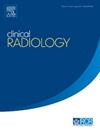One-year outcome of retrograde vascular access in peripheral arterial disease of Asian origin
IF 2.1
3区 医学
Q2 RADIOLOGY, NUCLEAR MEDICINE & MEDICAL IMAGING
引用次数: 0
Abstract
Background
Retrograde puncture is a safe alternative after the antegrade approach has failed, and complications at the puncture site are rare. However, the differences in the retrograde puncture side, outcomes, and complications between intermittent claudication (IC) and chronic limb ischaemia (CLI) remain unclear, particularly for Asian populations, and studies on this population are scarce.
Material and methods
A retrospective analysis was conducted on 255 consecutive patients with symptomatic peripheral arterial disease undergoing tibio-pedal or distal femoral artery retrograde puncture for endovascular intervention at our institute between January 2018 and December 2022. Preoperative, periprocedural, and postoperative complications and long-term outcomes were evaluated.
Results
The success rates for puncture and cannulation were 100% and 86.4%, respectively, in the intermittent claudication group (IC) and 95.8% and 81.5%, respectively, in the chronic limb ischaemia group (CLI). Failure was primarily due to vessel calcification and small vessel calibre hindering penetration and to occluded lesions. Puncture-related complications included fistula formation, haematoma, distal embolism, vessel spasm, and foreign body trapping in the lumen and occurred in 6.8% of patients in the IC group and 8.5% of those in the CLI group. The IC group had a significantly shorter admission duration (10.0 ± 14.4 vs. 16.4 ± 16.6 days, p=0.001∗).
Conclusions
In Asian patients with peripheral arterial disease, retrograde puncture is a safe and effective alternative in IC and CLI cases in which the antegrade method fails.
亚洲源性外周动脉疾病逆行血管通路的1年预后
背景:顺行入路失败后,逆行穿刺是一种安全的选择,穿刺部位的并发症很少。然而,间歇性跛行(IC)和慢性肢体缺血(CLI)在逆行穿刺侧、结局和并发症方面的差异仍不清楚,特别是在亚洲人群中,对这一人群的研究很少。材料与方法回顾性分析2018年1月至2022年12月在我院连续行胫足或股远端动脉逆行穿刺行血管内介入治疗的255例有症状的外周动脉疾病患者。评估术前、围手术期和术后并发症及长期预后。结果间歇性跛行组(IC)穿刺和插管成功率分别为100%和86.4%,慢性肢体缺血组(CLI)穿刺和插管成功率分别为95.8%和81.5%。失败主要是由于血管钙化和小血管直径阻碍穿透和闭塞的病变。穿刺相关并发症包括瘘管形成、血肿、远端栓塞、血管痉挛和腔内异物,IC组和CLI组的发生率分别为6.8%和8.5%。IC组入院时间显著缩短(10.0±14.4 vs. 16.4±16.6 d, p=0.001∗)。结论在亚洲外周动脉病变患者中,逆行穿刺是一种安全有效的方法,可用于行前穿刺失败的IC和CLI患者。
本文章由计算机程序翻译,如有差异,请以英文原文为准。
求助全文
约1分钟内获得全文
求助全文
来源期刊

Clinical radiology
医学-核医学
CiteScore
4.70
自引率
3.80%
发文量
528
审稿时长
76 days
期刊介绍:
Clinical Radiology is published by Elsevier on behalf of The Royal College of Radiologists. Clinical Radiology is an International Journal bringing you original research, editorials and review articles on all aspects of diagnostic imaging, including:
• Computed tomography
• Magnetic resonance imaging
• Ultrasonography
• Digital radiology
• Interventional radiology
• Radiography
• Nuclear medicine
Papers on radiological protection, quality assurance, audit in radiology and matters relating to radiological training and education are also included. In addition, each issue contains correspondence, book reviews and notices of forthcoming events.
 求助内容:
求助内容: 应助结果提醒方式:
应助结果提醒方式:


